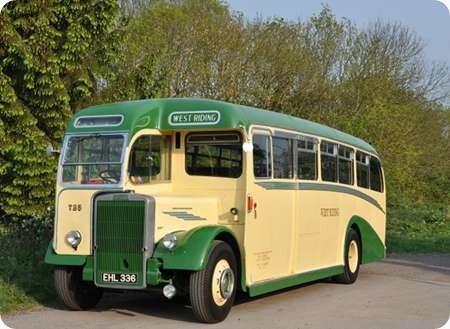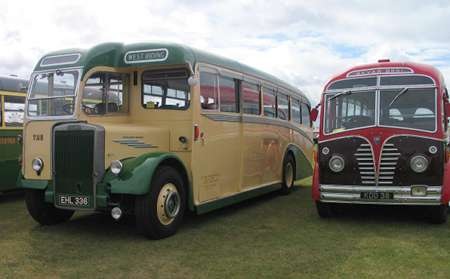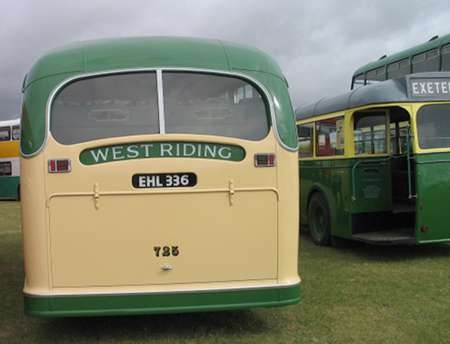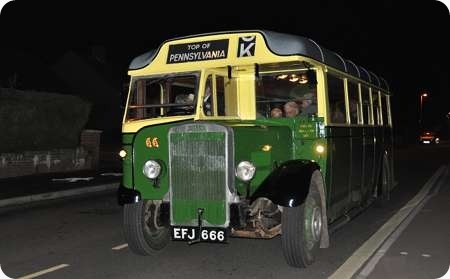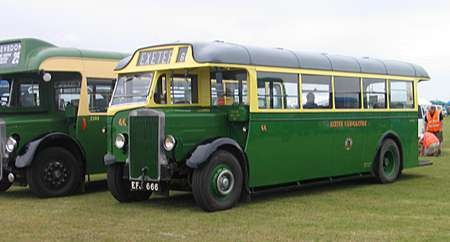Wakefields Motors – Leyland Tiger TS8 – FT 45?4 – 104
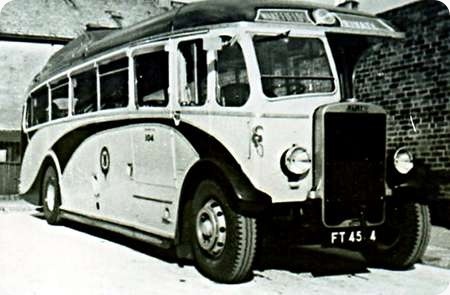
Photograph by ‘unknown’ if you took this photo please go to the copyright page.
Wakefields Motors
1937
Leyland Tiger TS8
Duple C30F
Regarded by many as one of the most handsome pre war coach bodies, if my information is correct, Wakefields Motors had four of these C30F Duple Coronations. FT 45?4/7 – 104/7, from 1937, were on a Leyland Tiger TS8 chassis.

Photograph by ‘unknown’ if you took this photo please go to the copyright page.
They were followed in 1938 by another four FT 49?? 108/11 but this time they were AEC Regals. The four Leylands spent some of the war years in Ireland on hire to the Northern Ireland Transport board. As a young boy of eight, I can remember them still being at Percy Main when the Beadle rebodied AEC’s arrived in 1952 & 53, they were eventually replaced by the Weymann Fanfares of 1955. I know many quality pre war chassis were being rebodied at that time, but I don’t know if these were. For those who don’t remember real money, the board at the front of the AEC, two shillings, 2/- is 10p.
Photograph and Copy contributed by Ronnie Hoye
14/04/15 – 06:59
The AEC is standing at the top of South Parade outside Quickfalls shop in Whitley Bay, who acted as booking agent for Wakefields. After picking up here, the coach would then pick up at Cullercoats, Tynemouth, North Shields and Wallsend. When I was quite young, my parents took me on a half-day tour to Rothbury and Cragside, for which one of the pre-war half-cab coaches was provided, although I don’t recall if it was an AEC or Leyland. For a tour like this going north, it would start in Wallsend with Whitley Bay as the last picking up point. The route then taken would be via Seaton Delaval and the A192 to Morpeth and then I think via Longhorsley, returning via Scotsgap or vice versa. On the return journey, there would be a break at Morpeth. Rothbury was a place we enjoyed visiting, and we used at one time or another all three tour operators from Whitley Bay, the others being Priory Coaches and United. Priory’s booking agent and pickup point was at the foot of North Parade, and as far as I can recall, they provided a Bedford SB coach. United, of course used the Bus Station and regrettably, provided a bus for the tour, admittedly an almost new Bristol LS5G, but still a bus, which did nothing to improve my parents low opinion of United as a tour operator. On the whole, we much preferred Wakefields, and over the years travelled on most of their day and half-day tours.
John Gibson
15/05/15 – 06:36
Just a shot in the dark on behalf of a friend. Did Wakefields by any chance have a livery of green and cream, presumably before WW2, and did they ever have any of the Northern GT "SE4 or SE6 saloons ??
Any pertinent information would be much appreciated thanks.
Chris Youhill
15/05/15 – 11:40
Chris, this is a round the houses way of saying, I don’t know, but my records would suggest that if the livery was green, it would be pre 1929. Wakefields Motors Limited, were founded in 1919, their depot was in Church Way North Shields. At a date I have not been able to establish, they became a subsidiary of The London North Eastern Railway Company. In 1929, they bought Archer Bros of North Shields, this increased the fleet to 43, 31 buses and 12 coaches, also in 1929, L.N.E.R purchased an interest in the NGT group, the name was retained, but Wakefields adopted NGT livery, and all new vehicles were numbered as part of the Tynemouth & District fleet, but they had a ‘W’ prefix. In 1933, NGT opened a new depot at Percy Main, all T&D and Wakefields vehicles were rehoused there, the remaining Wakefields vehicles were also renumbered. The Wakefields depot was sold off, as was the T&D depot in Suez Street North Shields, but the depot in John Street Cullercoats became the NGT group body and paint shop. Percy Main had eight NGT/SE6 vehicles, FT 3478/3482 – 82/86 from 1935; and FT 3903/3905 – 90/92 from 1936; to the best of my knowledge, none of them carried the Wakefields name. Until 1970, the name was in continuous use on some service buses, and all Percy Main based coaches, in 1975 all P/M vehicles were renamed Northern.
Ronnie Hoye
Quick links to the - Comments Page - Contact Page - Home Page
